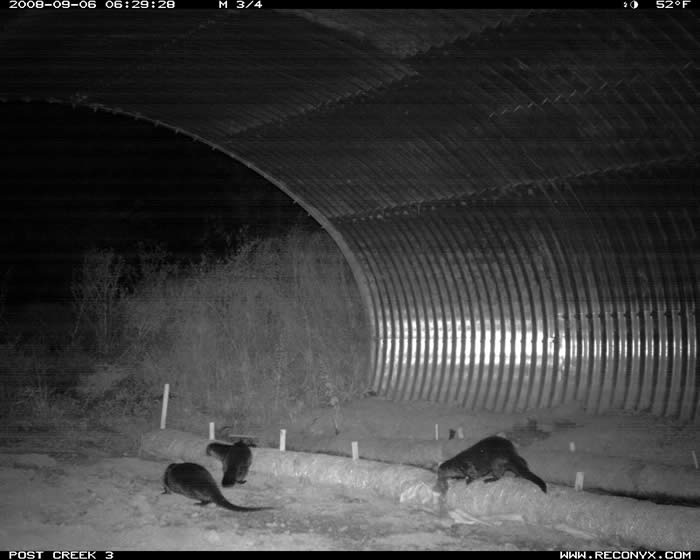Monitoring Tools
 Monitoring wildlife crossing structures for effectiveness requires a rigorous study plan to obtain valid results. Monitoring that is done for too short a period or in such a way that statistical inferences are impossible is a waste of money.
Monitoring wildlife crossing structures for effectiveness requires a rigorous study plan to obtain valid results. Monitoring that is done for too short a period or in such a way that statistical inferences are impossible is a waste of money.
The first step in developing a monitoring plan is to identify the objectives of the investigation. Often objectives will vary by agency. For example, DOTs tend to want to justify the cost of crossing structures by ensuring that they are used by wildlife, whereas resource agencies may be interested in restoring the movement opportunities for wildlife.
We strongly encourage DOTs and resource agencies to enlist the assistance of qualified scientists to help identify objectives and to develop a rigorous study plan prior to construction.
Pre-construction monitoring is typically needed to obtain statistically defensible results.
How to Evaluate the Effectiveness of Wildlife Crossing Structures
US93 Monitoring Program
Page Last Modified: July 21, 2015

 In the United States, a recent study estimated there are more than one million collisions between vehicles and large animals annually.
In the United States, a recent study estimated there are more than one million collisions between vehicles and large animals annually.